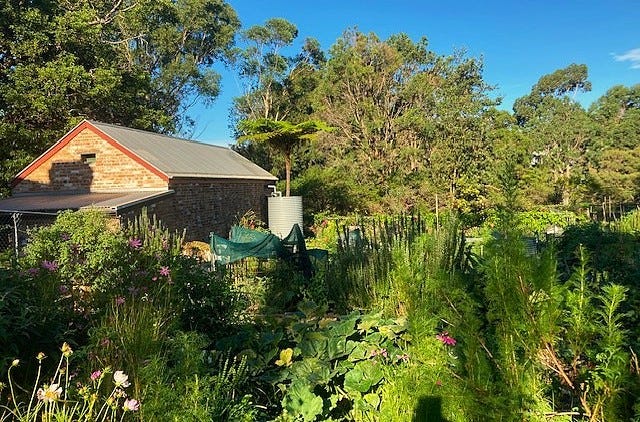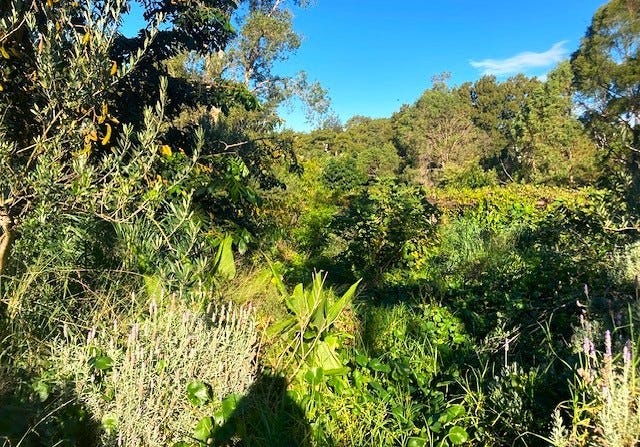asks me to take these words away from her recent Substack post. But it is an unnecessary ask. Her words resonate through my being, bringing all the clarity and relief that comes with a firmly stated truth. Nothing is fixed. Nothing is fated. Especially now as the dominant story of modernity reveals its wizened heart, ripping claws and lying tongue. This is not how we have to live nor want to live. Indeed, it’s not how we can live.The way we live is propositional. It’s a story we are telling. It changes. We can change it. Nothing is fixed. Nothing is fated.
There are right stories and wrong stories for human cultures, according to First Nations elders, as I wrote about in my first post for Psyche’s Nest. Right stories traditionally bestow upon humans the sacred duty of honouring and protecting Mother Earth and the generations of all beings to come. Wrong stories, more recently developed, place humans above and apart from Earth, encouraging an accumulation of individual power and wealth, devouring the world and our future.
Academic Tyson Yunkaporta of the Apelech clan, is succinct in his comparison of traditional and modern stories in Sand Talk: How Indigenous Thinking Can Save the World:
There is a pattern to the universe and everything in it, and there are knowledge systems and traditions that follow this pattern to maintain balance, to keep the temptations of narcissism in check. But recent traditions have emerged that break down creation systems like a virus, inflecting complex patterns with artificial simplicity, exercising a civilising control over what some see as chaos. The Sumerians started it. The Romans perfected it. The Anglosphere inherited it. The world is now mired in it.
The war between good and evil is in reality an imposition of stupidity and simplicity over wisdom and complexity (pp. 3-4).
His words also have that refreshing ring of truth. Stories which fail to heed the complex patterns of life are full of hubris and ignorance. They are wrong headed and empty hearted. Which is how many of us feel today when we find ourselves enmeshed in wrong story lives.
But then there are the right stories, the ones that honour universal patterns and life’s kinship. In Right Story, Wrong Story: Adventure in Indigenous Thinking, Yunkaporta emphasises that right story “never comes from individuals, but from groups living in right relation with each other and with the land”. Jill and Gladys Milroy (2008), Palyku women from the Pilbara region in Western Australia, declare that:
The right story connects us intimately to our country, giving us our place and our identity. The right story embeds us deeply in nature, connected to the living spirit. [1]
More simply still, elder Ross Williams of the Bindal people, says the right story is one of “we not I”, a story “you’ll better understand if you look deeper into nature.”
First Nation’s cultural stories are not for others to take. But they do offer people of all cultures an encouragement to reclaim and evolve their own Earth honouring stories to nest in, just as their ancestors did for millenia. Jem Stone, like many other First Nations teachers, points out that we all have Indigenous roots:
Through reconnecting to the earth, our cellular memory activates an ancestral knowing of our own lineages and ways that our ancestors originally connected with and cared for the Earth, which we can embrace today regardless of where we live. [2]
As ecological damage and disasters mount, the cries of Mother Earth are calling us home to a belonging and kinship which is embedded in our DNA. Right stories speak to us through traditional knowledge and through the revelations of ecological science, New Physics and complexity theory. We know them as right stories because they include not exclude, attend not deny, respect not exploit, locate not disorientate. And their fruit is thoughtful and mature actions not numbing and reckless behaviours.
Here on Substack, there is an abundance of right stories fermenting, and fomenting activated by the yeast of Earth-centred consciousness. So many of the articles I read (only a fraction of what is out there) are from people who, in all sorts of different circumstances, are choosing to live their lives in ways that dismantle harmful stories of domination and fragmentation. Community initiatives like forest protection, sharing economies, local food co-ops, repair workshops, wetland restorations, pollinator corridors, financial divestment from banks and funds that invest in fossil fuels are all gathering momentum. Each story fertilises my mind and seeds my heart, leaving me more determined to find my own role in enacting right stories where I live here on unceded Wangal country in Warrane/Sydney.
One consequence of my changing stories is to re-prioritise my time, so I can be more active on the committees of both my local community garden and my park’s Food Forest. Stepping up to greater involvement in these places means saying no to other activities, like writing climate psychology papers, attending conferences and meetings. The pull of my career path wanes, while the call of my community garden, badly in need of attention and care, is intensifying.
Every time I walk into the garden’s neglected spaces and hear members’ brewing discontents due to lack of organisation and cohesion, this call resonates louder, and I feel my body readying for action. Everyone else it seems is too busy, but when I think of my own busy-ness, I know that it’s time to be more fully aligned with the right story that has been taking root in me over these last years. A story which says growing food in community, improving soils, sharing produce and educating the neighbourhood about local ecosystems is both foundational to life and a foundation for a good life. I am grateful for both the call and the opportunity to enact it.
Passion is always the best place to start. I didn’t know how passionate I was about urban food growing until I went to an urban agriculture symposium a bit over a year ago and unexpectedly landed in my personal heaven. I met so many inspired people and heard such transformative stories about urban food projects in Australia and the US, that even although I was coming down with the flu, I was riveted and energised. These were stories that were not just about growing crops and restoring land, but were also about making communities healthier and more connected. That was the beginning of realising, I had yet another calling in me, following quite a few others in my life (see my post Once I was an Astrologer).
I wonder what is calling you today in the midst of our changing stories? What Substacks are you gravitating to? Which lifts your spirits most? What energises you? What humbles you? What opens up possibilities for ‘we not I’? Posts chronicling community food growing inspire and enliven me, but your call may be becoming from somewhere very different. Maybe it is coming from the margins of your established life, waiting for you to hear and respond to the message that nothing is fixed, nothing is fated, especially in this time when wrong stories crumble and right stories surface. Please leave us a comment, each life-honouring story we tell and act upon, sparks another.
Recommended reads
Often there is a chicken and egg dance between the stories we live by and the actions we take. Sometimes it is the story which leads changes, other times its action that changes stories.
If you are not sure what are your first steps should be, here are two fantastic posts about nurturing community connection, full of practical examples and wise advice on how and where to get started.
From
:When we imagine “building community,” we often picture grand, organised efforts — forming groups, running events, creating new social systems. But real community usually starts smaller than that — in the normal rhythms of everyday life.
and from
Villaging is not an aesthetic. It is not a nostalgic retreat. It is not about curating a perfect life.
It is a practice. A process. A lived commitment.
It is a radical assertion that we do not have to do this alone. That we can create economies of care instead of extraction. That we can regenerate the land rather than deplete it. That we can belong to place, and to each other, without losing ourselves.
And if you are needing to reflect more on right stories, head over to this beautiful essay from Indigenous writer and seed keeper
:May we remember that we are woven into a beautiful tapestry of kinship of place as we push against the modern narrative of disconnection that tells us we live on the earth instead of inside of a beautiful, storied, relational landscape. May we lean into this practice of reverent curiosity as we enliven the stories that lie dormant in the land, allowing us to sing countless praise songs to this most exquisite Earth family that has never forgotten us.
[1] Milroy, G.I. & Milroy, J. (2008) Different ways of knowing: Trees are our families too, in S. Morgan, T. Mia & B. Kwaymullina (eds.) Heartsick for Country: Stories of Love, Spirit and Creation. Fremantle, Australia: Fremantle Press.
2. Gillespie, S, (2024). Learning from the frontline: community therapies in disaster-affected regions in Australia in Explorations Journal Issue 5 https://www.climatepsychologyalliance.org/images/research-reflection/Issue%205.pdf p.12









Thank you for another inspiring and meaningful piece, and the excellent pointers to other such substack sites. Together we journey toward the simple, the green and the sacred - and to intelligent ways forward xx
Brigid expresses it so beautifully! V informative! I lived the bit about how the Sumerian’s started it etc! I believe in the care for the land and belonging but my experience with community has been frustrating. I think the re-education of youth will help build more loving ways. Thanks Sally!